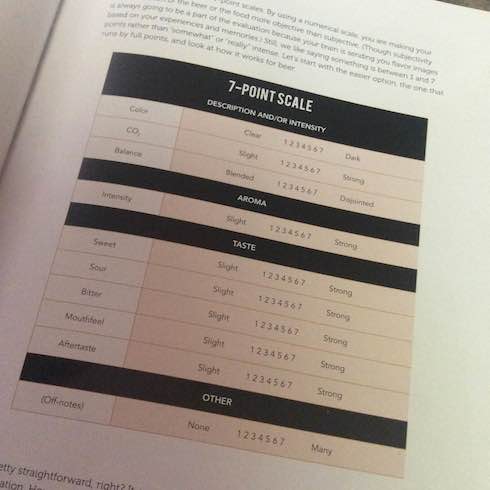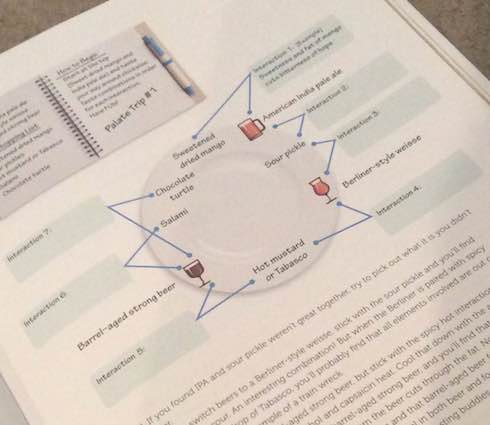
Sub-titled: The Essential Guide from the Pairing Pros, this book covers quite a bit of ground and is certainly a handy reference guide for setting up a major beer dinner or just to enjoy a dinner with family with beer that will really enhance the experience.
Julia Herz and Gwen Conley have come at the problem from a different angle. First how to talk about pairing and what the goal is. The typical Three C’s of Compare, Contrast and Cut are there but they add more nuance to those common practices. A wow moment for me was to think of intensity and bridges as just as important. What is the intensity of the food or the hops in that IPA? And are there friends of friends that can cart you over the bridge from the beer to the food?
There were other golden information nuggets in those first three chapters such as discussing beer in non-beer terms such as ice tea or maple syrup or flavors in relation to past food experiences. Did that beer remind you of your Mom’s cooking or a trip to Oregon? They also place, rightly, importance on What comes first? music (beer) or lyrics (food) when creating a craft beer dinner. But at 60+ pages of science of smell and other book learning, it came across more as a data dump as precursor to the good stuff later.
The graphs used were also hit-and-miss. Most did not seem to be organized in an immediately recognizable format and required poring over to see what should have been a distillation of information. The Potential Interactions chart of page 72 is a prime example. The type is way too small and there are too many columns with what appears, at first, as repeated information. But then the intensity beer tasting form is better….

In between, is the Palate Trip graphic which looks a little too clip-arty and makes the really good idea of trying the same foods with different beers a bit harder to grasp. The authors use train wreck as the term for bad pairings and this is a prime example of one…
The meat of the book is well done. (Pun intended). The basic beer styles are covered with data for the super geeky and with a range of pairing suggestions that are both comfortable and outside of the box. I really like the idea of “Try this First”. You (or I) may not like that particular food, but reading about why they chose it can easily lead one to a different pick. Plus, I appreciated that nothing was way too fancy. There were fancy examples but this book is firmly geared to what even a rare occasion cook, like me, could accomplish with a little work.
The expansive section of chocolate, cheese and other strong pairing choices probably could have been folded in as sidebars to the main chapter since it re-covers ground already trodden.
Overall, the book has some solid reference points and I think adds to the beer library admirably.